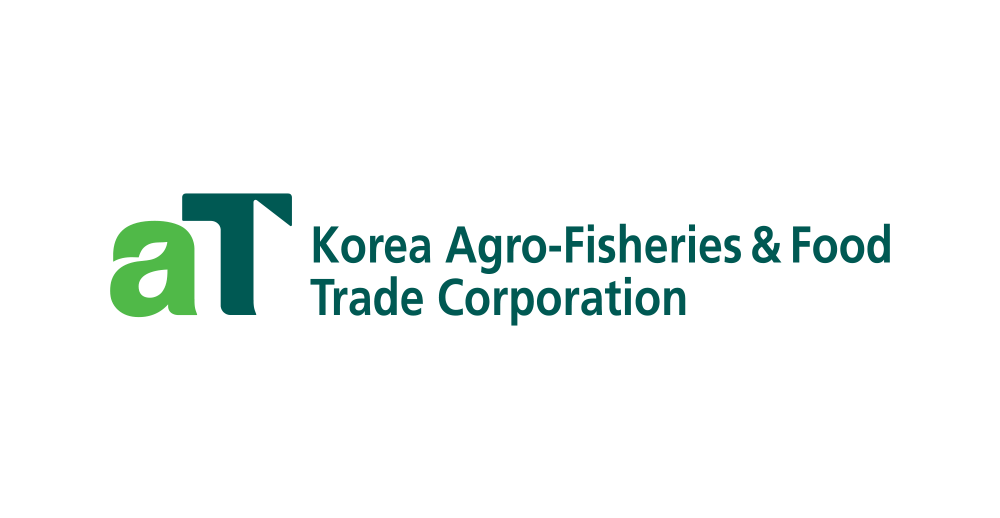Did you know that, according to the World Bank, inefficiencies in the food supply chain cost Southeast Asia an estimated $15 billion yearly? This staggering figure highlights how complex and vital the food supply chain is to our everyday lives.
In simple terms, food supply chain refers to the interconnected network of activities that bring food from farms to your dining table. This chain involves several steps, including growing, processing, transporting, and consuming food.
A well-functioning food supply chain is crucial for ensuring that we have food to eat and that the food is safe, affordable, and readily available.
When the food supply chain operates smoothly, it helps secure access to nutritious food, which is vital for health and well-being.
In this article, we will explore the food supply chain, its key steps, the importance of food supply chain management, and how it impacts food safety, affordability, and global food security.
What Is the Food Supply Chain?

The food supply chain is the process that food goes through from the moment it is produced on a farm until it reaches your plate.
This chain involves multiple steps, including production, processing, distribution, and consumption. Each step is interconnected, meaning that a disruption at any point can affect the entire system.
The food supply chain is crucial in the food industry because it ensures that food is available, safe, and affordable for consumers. A well-functioning supply chain supports food security, ensuring people have reliable access to enough nutritious food.
It also involves food safety practices to ensure that our food is free from harmful substances and safe for consumption.
Food Supply Chain Stages:
The food and agricultural supply chain is a multifaceted system that encompasses five distinct stages, each contributing to the journey of food products from cultivation to consumption.
Delving into these stages provides a comprehensive understanding of the complexities involved in ensuring a smooth and efficient supply chain.
1. Production
- Farming: In the context of farming, the initial stage of manufacturing food involves the cultivation of crops and the raising of livestock. Farmers undertake activities such as planting, nurturing, and harvesting crops, as well as ensuring the well-being and health of animals. This primary stage sets the foundation for the entire supply chain, determining the quality and quantity of raw materials available for further processing.
- Fishing: In the case of seafood, the production stage extends to fishing and the processing of fish, shellfish, and other aquatic organisms. Sustainable fishing practices are increasingly emphasized to preserve marine ecosystems.
2. Processing:
- Manufacturing: Once raw agricultural products are harvested or caught, they undergo food processing to transform them into consumable food items. This stage involves various activities such as milling grains, canning vegetables and food products packaging. Processing adds value to raw materials and ensures that products are ready for distribution and consumption.
- Refining: Certain food products, particularly oils and sugars, undergo refining processes to enhance their quality, taste, and safety. Refining contributes to the development of products with specific characteristics and ensures compliance with quality standards.
3. Distribution:
- Transportation: Processed food products are transported from production facilities to distribution centers, markets, and retailers. Transportation methods vary, including trucks, ships, and planes. Efficient logistics at this stage are crucial to prevent delays and maintain the freshness of perishable goods.
- Warehousing: Distribution centers act as hubs for managing and storing inventory before food distributors dispatch the products to retailers. Effective food warehousing and distribution involves strategic inventory management, ensuring that goods are readily available to meet consumer demand.
4. Retail:
- Selling: At the retail stage, food products reach consumers through various channels, including grocery stores, supermarkets, and specialty markets. Retailers play a pivotal role in stocking shelves, managing inventory, and providing a diverse range of products to cater to consumer preferences.
- Food Service: Beyond traditional retail, the food service industry encompasses restaurants, cafes, and catering services. This stage of the supply chain involves the preparation and serving of food to consumers, adding another layer of complexity to the overall system.
5. Consumption:
- End-User: The final stage of the food and agricultural supply chain is consumption, where individuals purchase, prepare, and consume food products. Consumer choices, dietary trends, and cultural preferences influence demand, creating a feedback loop that impacts each preceding stage of the supply chain.
Importance of Food Supply Chain Management

Effective food supply chain management is essential for ensuring that food reaches consumers safely, reasonably, and sustainably. It is also critical to address the many challenges that can arise, from maintaining food quality to adapting to unexpected disruptions.
1. Ensuring Food Safety and Quality
One of the most critical aspects of food supply chain management is maintaining high standards for food safety and quality throughout the process. Every step, from production to consumption, must be carefully monitored to ensure food remains safe for consumers.
For example, Singapore has implemented stringent SFA food regulations that require strict adherence to safety practices across the food supply chain. These regulations help to prevent contamination and ensure that the food available to consumers is of the highest quality.
2. Sustainability and Environmental Impact
Sustainability is another crucial aspect of supply chain management in the food industry. Implementing sustainable packaging practices helps reduce the food industry’s environmental footprint, making it more environmentally friendly and sustainable for the future.
In Vietnam, green supply chain initiatives have been introduced to minimize waste and lower carbon emissions. These initiatives are part of a broader effort to make the global food supply chain more sustainable and environmentally responsible.
3. Cost Efficiency
Effective food supply chain management can also lead to significant cost savings. By optimizing each supply chain step, companies can reduce waste, improve efficiency, and lower overall costs.
For instance, in the Philippines, cost-saving strategies have been implemented within the food industry supply chain to streamline operations and reduce expenses. These strategies make food more affordable for consumers and help businesses remain competitive in the market.
4. Adaptability and Resilience
The food supply chain must be adaptable and resilient to handle disruptions such as natural disasters, economic shifts, or pandemics. The COVID-19 pandemic, for example, highlighted the need for a resilient supply chain as many Southeast Asian countries faced significant disruptions.
The pandemic led to shortages, delays, and increased prices, emphasizing the importance of a robust food supply chain management system.
Aggrotech’s integration into the supply chain has also become increasingly important, allowing for better monitoring and quicker responses to such challenges.
Challenges in the Food Supply Chain:
The food supply chain faces numerous challenges, ranging from environmental concerns to logistical complexities.
1. Climate Change:
- Changing weather patterns, extreme events, and disruptions to agriculture pose challenges to the reliability of the food supply chain.
- Adaptation strategies, such as resilient crop varieties and sustainable farming practices, are crucial to mitigate the impact of climate change.
2. Food Safety and Quality:

- Ensuring the safety and quality of food products is a paramount concern. Food contamination, spoilage, and inadequate processing can lead to health risks for consumers.
- Rigorous testing, traceability systems, and adherence to quality standards are essential to address this challenge.
3. Globalization:
- As the food supply chain becomes increasingly globalized, the complexity of managing international trade, regulations, and diverse supply sources grows.
- Political, economic, and regulatory changes in different regions can impact the smooth flow of products across borders.
4. Supply Chain Disruptions:
- Natural disasters, geopolitical events, and health crises (as demonstrated by the COVID-19 pandemic) can disrupt the flow of goods through the supply chain.
- Building resilience through diversification of suppliers, contingency planning, and real-time monitoring is vital to overcome disruptions.
5. Waste Management:
- Food waste is a significant issue throughout the supply chain, from production to consumption.
- Implementing measures such as improved inventory management, better packaging, and initiatives to redistribute surplus food can help address this challenge.
Innovations in the Southeast Asian Food Supply Chain

Thanks to a variety of innovative solutions and technologies, the food supply chain in Southeast Asia is undergoing significant transformations. These innovations are not only making the supply chain more efficient but also addressing critical issues such as food security, sustainability, and food safety.
Precision Agriculture
One of the most impactful innovations in the food supply chain is precision agriculture, which uses advanced technology to optimize resources like water, fertilizers, and pesticides.
This approach helps farmers improve crop yields while reducing waste. Initiatives in Thailand, for example, promote the use of drone technology for crop monitoring.
These drones can collect detailed data on crop health, soil conditions, and moisture levels, allowing farmers to make informed decisions that increase productivity and sustainability.
Blockchain Technology
Another groundbreaking innovation is using blockchain technology to enhance transparency and traceability within the food supply chain. Blockchain allows all participants in the supply chain, from farmers to consumers, to access real-time data about the origins and handling of food products.
This technology is particularly beneficial for improving food safety practices. In Southeast Asia, pilot projects have been launched to use blockchain to track the provenance of seafood, ensuring that consumers can trust the safety and sustainability of their food.
This innovation is helping to build consumer confidence and enforce stricter safety standards across the region.
Vertical Farming
With limited land for traditional farming, Southeast Asia is adopting vertical farming to increase food production in urban areas. Vertical farming involves growing crops in stacked layers within controlled environments, allowing for year-round production with minimal land use.
Singapore, in particular, has seen a rise in the popularity of vertical farms, which help the city-state address its land scarcity challenges.
These farms use food tech innovations such as LED lighting and hydroponics to grow fresh produce efficiently, providing a sustainable alternative to traditional agriculture.
Food Waste Reduction Initiatives
Reducing food waste is another critical area where innovation makes a difference in the supply chain. Technologies and programs designed to minimize food waste are being implemented at various supply chain stages, from production to consumption.
For instance, companies like Lumitics in Singapore are leading the charge by introducing tech in the kitchen to optimize food waste reduction. These initiatives reduce waste and contribute to food security by ensuring that more food reaches consumers rather than being discarded.
Conclusion
The food supply chain is a vital process that ensures food moves from farms to our tables safely, efficiently, and sustainably.
Understanding the food supply chain helps us appreciate the complexities involved in bringing food to consumers while maintaining high safety and quality standards.
Through effective food supply chain management and the integration of innovative technologies like precision agriculture and blockchain, Southeast Asia is making strides in improving food safety, reducing waste, and increasing productivity.
By continuing to innovate and optimize the food supply chain, we can ensure a secure and sustainable future for food production and consumption worldwide.





























